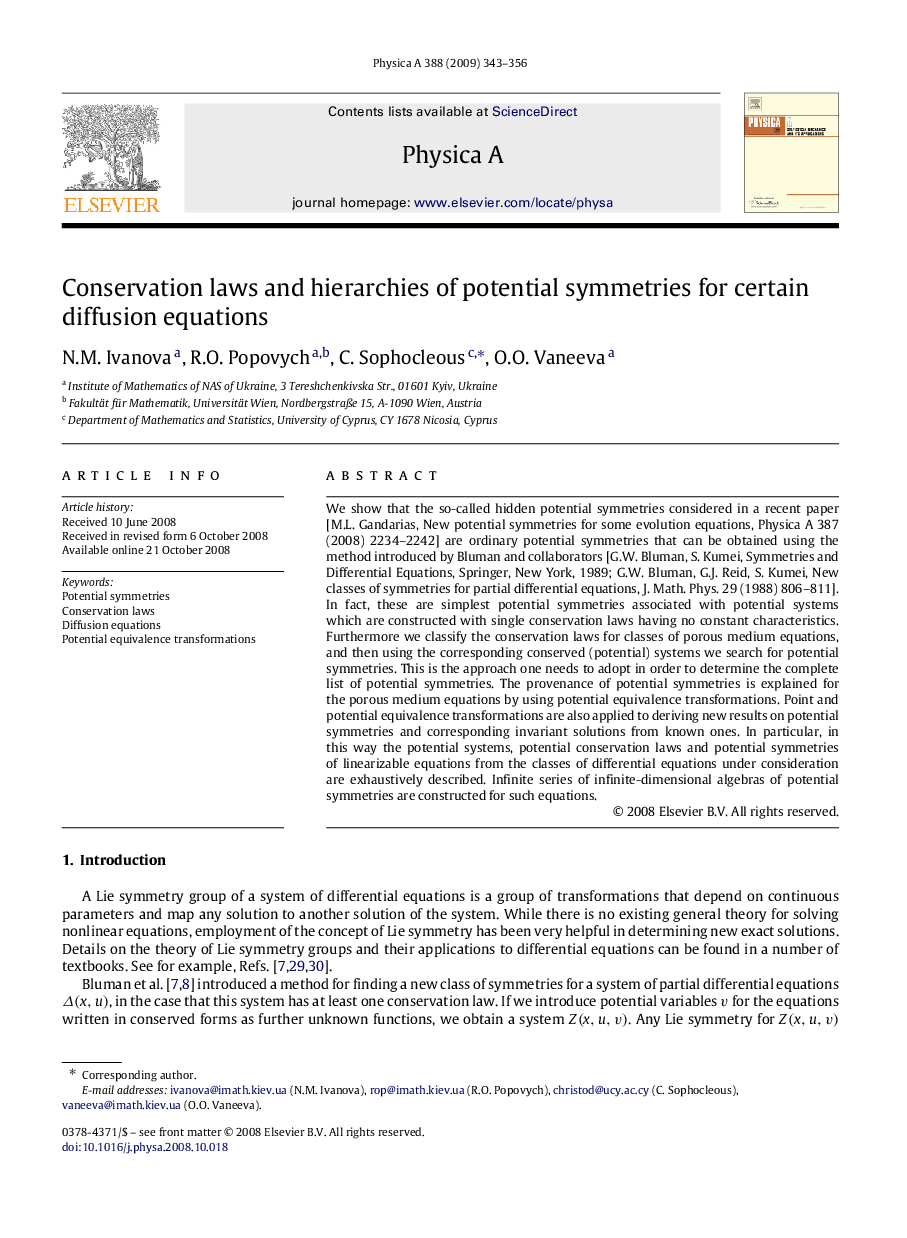| Article ID | Journal | Published Year | Pages | File Type |
|---|---|---|---|---|
| 977470 | Physica A: Statistical Mechanics and its Applications | 2009 | 14 Pages |
We show that the so-called hidden potential symmetries considered in a recent paper [M.L. Gandarias, New potential symmetries for some evolution equations, Physica A 387 (2008) 2234–2242] are ordinary potential symmetries that can be obtained using the method introduced by Bluman and collaborators [G.W. Bluman, S. Kumei, Symmetries and Differential Equations, Springer, New York, 1989; G.W. Bluman, G.J. Reid, S. Kumei, New classes of symmetries for partial differential equations, J. Math. Phys. 29 (1988) 806–811]. In fact, these are simplest potential symmetries associated with potential systems which are constructed with single conservation laws having no constant characteristics. Furthermore we classify the conservation laws for classes of porous medium equations, and then using the corresponding conserved (potential) systems we search for potential symmetries. This is the approach one needs to adopt in order to determine the complete list of potential symmetries. The provenance of potential symmetries is explained for the porous medium equations by using potential equivalence transformations. Point and potential equivalence transformations are also applied to deriving new results on potential symmetries and corresponding invariant solutions from known ones. In particular, in this way the potential systems, potential conservation laws and potential symmetries of linearizable equations from the classes of differential equations under consideration are exhaustively described. Infinite series of infinite-dimensional algebras of potential symmetries are constructed for such equations.
